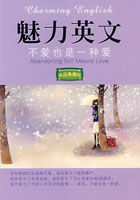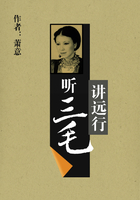夏威夷印象
For most of us, Hawaii begins to weave her spell with some little glimmer of awareness. Golden beaches and golden people. Sun, sand, sea, and surf...And somewhere between the blue skies and the palm trees...we’re hooked.
The Hawaiian Islands are one of the most beautiful places on earth. The weather is friendly. The temperature ranges from 60-90 degrees all year long. It’s a little warmer in summer, and a little cooler in winter, but every day is a beach day for somebody.
There are no strangers in Paradise. Perhaps the most beautiful part of Hawaii is the genuine warmth of people. We call it the spirit of Aloha. It has allowed a melting pot of cultures from all over the world to find common ground, and a new home, in this most gentle of places.
对于大多数人来说,那些星星点点的关于夏威夷的印象,足以让我们沉浸在她的魅力之中了。金色的海滩、金色的人们。阳光、沙滩、大海、浪花……在蓝天和棕榈树之间,我们流连忘返。
夏威夷群岛是世界上最美丽的地方之一。这里气候怡人,气温常年在华氏60~90度之间。冬暖夏凉,对于某些人来说每天都是晒太阳的好日子。
在这个人间天堂,人们不会有陌生感。也许夏威夷人与生俱来的热情才是这里的真正魅力之所在。我们称之为爱的精神。作为世界上最文明地方之一的夏威夷,同时也是个多元文化的大熔炉。
实战提升
Practising&Exercise
单词注释
glimmer [5^limE] v. 发出微光;闪烁不定
temperature [5tempritFE(r)] n. 温度,气温
stranger [5streindVE] n.陌生人 ;外地人
gentle [5dVentl] adj. 温和的;和善的,仁慈的
实用句型&词组
The young woman was determined to hook a husband.(欺骗)
The temperature ranges between 30 and 40 degrees centigrade.(变动, 变化)
One color melted into another.(逐渐变成)
翻译行不行
对于大多数人来说,那些星星点点的关于夏威夷的印象,足以让我们沉浸在她的魅力之中了。
夏威夷群岛是世界上最美丽的地方之一。
我们称之为爱的精神。作为世界上最文明地方之一的夏威夷,同时也是个多元文化的大熔炉。
第一章 Spotlight on Copenhagen (1)
美不胜收的哥本哈根
Are you too old for fairy tales? If you think so, Copenhagen is sure to change your mind.
See the city first from the water. In the harbor sits Denmark’s best-known landmark: the Little Mermaid. Remember her? She left the world of the Sea People in search of a human soul in one of Hans Christian Andersen’s beloved fantasies. From the harbor you can get a feel for the attractive“city of green spires.”At twilight or in cloudy weather, the copper-covered spires of old castles and churches lend the city a dream-like atmosphere. You’ll think you’ve stepped into a watercolor painting.
Copenhagen is a city on a human scale. You don’t have to hurry to walk the city’s center in less than an hour. Exploring it will take much longer. But that’s easy. Copenhagen was the first city to declare a street for pedestrians only. The city has less traffic noise and pollution than any other European capital.
Stroll away from the harbor along the riverbanks, you’ll see the modest Amalienborg Palace first. Completed in the mid-18th century, it still houses the royal family. The Danish Royal Guard is on duty. At noon, you ll watch the changing of the guard. The guards are not just for show, however. Danes will always remember their heroism on April 9, 1940. When the Nazis invaded Denmark, the guards aimed their guns and fired. Soldiers fell on both sides. The guards would all have been killed if the king hadn’t ordered them to surrender.
Churches and castles are almost all that remain of the original city. Copenhagen became the capital of Denmark in 1445. During the late 16th century, trade grew, and so did the city. But fires in 1728 and 1795 destroyed the old wooden structures. Much of what we see today dates from the 19th and early 20th centuries.
See one of the spires up close—really close—at the 17th-century Church of Our Savior. Brave souls may climb the 150 stairs winding outside the spire to its top. If you’re afraid of heights, or if it’s a windy day, you can forget the climb. But then you’ll miss the magnificent view.
Once the earth is under your feet again (you’ll enjoy the feeling), cross the nearest bridge to Castle Island. The curious yet majestic-looking spire ahead tops the oldest stock exchange in Europe, built in 1619. Its spire is formed from the entwined tails of three dragons. They represent Denmark, Sweden and Norway.
Keep going, to the Christiansborg Palace. The town of Copenhagen began here. Stop and visit the medieval castle. Parliament and the Royal Reception Chambers are open, too. Then continue to Nyhavn, a narrow waterway dug by soldiers in 1673. You’ll understand why Hans Christian Andersen made this charming waterway his home. A specially-built mirror outside his apartment window allowed him to peek unseen at the world outside.
Nyhavn is peaceful, an ideal place for lingering and people-watching. You’ll usually see them dressed casually, though they are among Europe’s rich people.
To see them having fun, and to have some fun yourself, cross Andersens Boulevard and enter Tivoli Gardens. You won’t be alone. More than five million people a year come here. They come to dance, dine, take in outdoor and indoor concerts, see ballets and laugh at the comedy. One tip: Bring a lot of money. About 20 restaurants are among the city’s most expensive. Even without money, you can still enjoy the proud old trees, the colored night lights and the beautiful gardens. You might feel as if you are in a fairy tale.
你是不是年龄大了,都不想看童话了?如果你是这么认为的话,哥本哈根一定能够改变你的想法。
要看这座城市,得先从水看起。丹麦最有名的标志性建筑——小美人鱼就坐落在港口处。记得她吗?在安徒生的一个童话里,她离开了海底世界,想变成一个真正的人。安徒生的许多童话故事都很受欢迎哩。从这个港口你可以领略到这座迷人的“绿色塔尖之城”的魅力。黎明时分或天气阴霾时,旧堡垒和教堂的镀铜塔尖会给这个城市营造梦一般的气氛。你会以为自己步入了一幅水彩画。
哥本哈根是一个很人性化的城市。你不需要在一小时内匆匆地将市中心走完。考察这个城市要花些时间。但那也是件很轻松的事。哥本哈根是第一个划出步行街的城市。跟欧洲其他国家的首都相比,这个城市的交通噪音和污染少了许多。
自港口沿着河岸漫步,最先映入眼帘的是风格朴实的阿玛利安堡皇宫。阿玛利安堡皇宫建造于18世纪中期,皇室家族至今仍居住于此。皇家卫队也还在这里执行任务。中午可以观赏到卫兵换岗的仪式。这些卫兵绝不仅是装装样子而已。丹麦人永远记得他们在1940年4月9日的英勇事迹。当时纳粹分子入侵丹麦,这里的卫兵与之开火交战。双方都有伤亡。如果不是国王下令让他们投降的话,这些卫兵可能全都为国捐躯了。
大概只有教堂与古堡是古城遗留下来的。哥本哈根于1445年成为丹麦的首都。16世纪末,贸易的发展带动了城市的发展。但是,城中的旧式木制建筑在1728年和1795年的两场大火中毁于一旦。今天我们所看到的大部分建筑都是在19世纪和20世纪初建造的。















